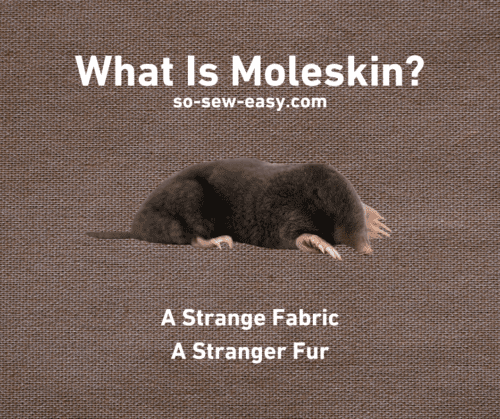
Moleskin fabric is a curious and fairly misleading word. Not only is it often mistaken for the similar-sounding brand Moleskine, but also for the slightly more related mole fur. Unlike what it sounds like moleskin fabric is not in any way the fur or skin of moles (which can also be called moleskin!?), and is instead a type of fabric textile prized for its warmth and hardiness. In this article, we will be going through everything you need to know about moleskin, from its history, production, and consumption to the best sewing projects and patterns to use it with.
What Is Moleskin?
Moleskin is a luxurious, soft, and dense cotton fabric with a distinct brushed surface that closely resembles the texture of an animal's mole fur. This versatile textile is created by weaving a heavy twill fabric and then subjecting it to a specialized shearing process that removes the top layer of fibers. After shearing, the fabric is meticulously brushed, which raises the remaining fibers and creates its signature velvety texture.
Moleskin's unique combination of strength and softness makes it a valuable textile in fashion and beyond. One of its most notable traits is its excellent resistance to wind and water, which makes it perfect for outdoor garments like jackets, trousers, and coats. Additionally, moleskin is known for its impressive insulating abilities, providing the wearer with warmth and comfort without the need for bulky layers. The fabric is also highly durable and resistant to abrasion, making it an excellent choice for workwear and rugged outdoor activities.
Another appealing aspect of moleskin is its incredible softness and comfort. The raised nap gives it a gentle, plush feel that is often compared to suede or velvet, making it a popular choice for clothing that comes into direct contact with the skin. This luxurious texture, combined with the fabric's breathability, makes moleskin ideal for shirts, dresses, and even undergarments. In addition to its use in clothing, moleskin is also utilized in home furnishings, such as upholstery and cushion covers, due to its cozy feel and hardwearing nature.
Moleskin Vs. flannel, velvet, and corduroy
When comparing moleskin to other popular fabrics like flannel, velvet, and corduroy, there are several key differences to consider.
Flannel is a lighter-weight fabric made from a blend of cotton, wool, or synthetic fibers. It is known for its soft, cozy texture, which makes it ideal for cold-weather clothing like pajamas and winter shirts. While both moleskin and flannel have a soft feel, moleskin is more robust and offers greater durability. For instance, moleskin pants are perfect for outdoor activities, while flannel pants are more suited for lounging at home.
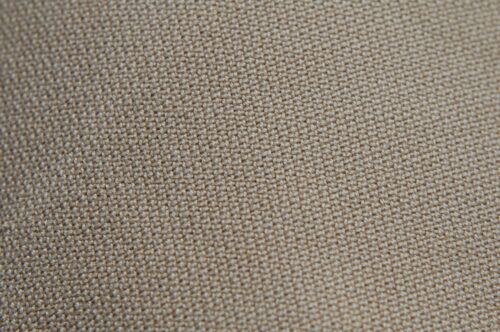



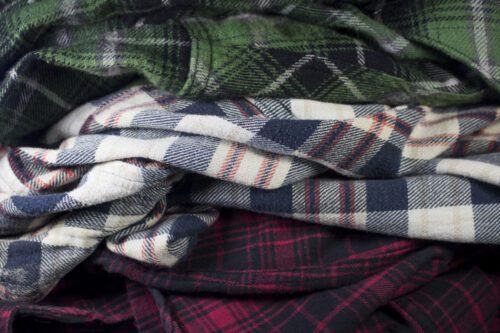

Velvet is a plush, soft fabric with a short, dense pile, often made from silk, rayon, or synthetics. It's commonly used for luxurious garments, upholstery, and drapery. While moleskin and velvet both have a soft, luxurious texture, moleskin is more hard-wearing, making it more suitable for everyday clothing items.




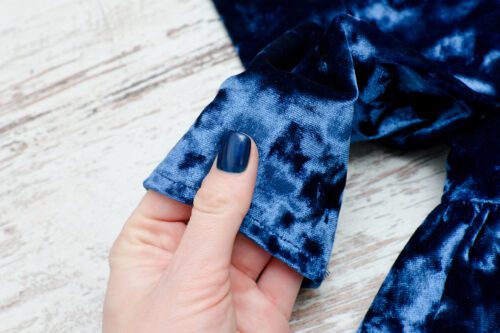

Corduroy, similar to moleskin, is a durable cotton fabric with vertical ridges, or “wales,” which give it a distinctive appearance. Both moleskin and corduroy are hard-wearing fabrics, but moleskin has a smoother surface and is less prone to creasing. As a result, moleskin is often chosen for high-quality garments like jackets and trousers, while corduroy is frequently used for pants, skirts, and casual jackets.




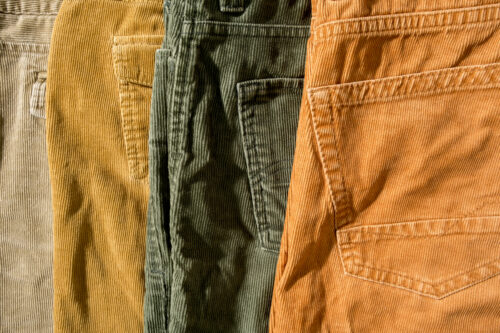

Why Is It Called Moleskin?
The name “moleskin” might evoke images of small, burrowing mammals with velvety fur, but the fabric itself is not derived from the animal. Rather, the term pays homage to the texture and feel of this unique material. Moleskin fabric is known for its soft, smooth surface that closely resembles the dense, plush fur of a mole. The tactile similarity between the two is so striking that, upon touching the fabric, one can almost imagine the gentle caress of a mole's fur against their skin. This likeness to the animal's coat is the primary reason why the fabric bears such a distinctive name.
Moleskin fabric is made from heavy, densely woven cotton, typically with a twill weave, and its characteristic softness is achieved through a special finishing process. During this process, the fabric is sheared on one side to create a short, dense pile that mimics the appearance and feel of a mole's fur. This plush texture not only gives moleskin its name but also lends the fabric its luxurious and cozy appeal. The end result is a material that is both visually and texturally evocative of the small creature it is named after.
Throughout history, moleskin has been utilized in a variety of applications, further reinforcing its connection to the animal namesake. For example, in the 19th century, English coal miners wore moleskin trousers for their durability and warmth in the damp, cold underground environment. The fabric's protective qualities and its ability to insulate against the elements mirrored the mole's own resourcefulness in its subterranean habitat. Today, moleskin remains a popular choice for clothing, upholstery, and even bookbinding, due to its unique blend of luxury and practicality – a testament to the lasting impact of the mole's influence on this versatile fabric.
A Brief History Of Moleskin
Fuzzy Origins
Moleskin has a rich and fascinating history that dates back several centuries. It is believed to have originated in medieval Europe, where it was first used to create clothing for the working class. The name “moleskin” is derived from its soft and smooth texture, which resembles the fur of a mole. Although moleskin was not actually made from mole fur, the fabric earned its name because of its similar feel and appearance.
During the early days of its development, moleskin was primarily produced using densely woven cotton fibers. These fibers were then sheared on one side to create the fabric's distinct velvety texture. This technique resulted in a soft, durable, and warm material that was ideal for creating garments to withstand harsh working conditions.
Industrial Necessity
The Industrial Revolution brought significant advancements in textile manufacturing, leading to an increase in the production and popularity of moleskin. During this period, moleskin became a staple fabric for the working class, particularly among coal miners, who valued the fabric's durability and resistance to wear and tear. Its wind-resistant and insulating properties also made it a popular choice for outerwear, as it provided protection against the elements.
Manufacturers in England, particularly in the Lancashire region, were renowned for their high-quality moleskin fabric. The fabric's popularity eventually spread to other European countries and the United States, where it continued to be used for workwear and eventually for military uniforms.
in Fashion and Pop Culture
Over time, moleskin's appeal expanded beyond the realm of workwear. The fabric's soft and luxurious feel led to its adoption by fashion designers and tailors who used it to create sophisticated and stylish garments. From the 19th century onwards, moleskin became a popular choice for trousers, jackets, and vests, especially among the upper classes.
Moleskin also made its way into popular culture, as famous personalities began wearing garments made from the fabric. For instance, iconic American author Ernest Hemingway was known for his penchant for moleskin trousers, which he wore on his many adventures. This increased visibility helped cement moleskin's status as a versatile and fashionable fabric.
Modern Uses of Moleskin
In recent years, moleskin has continued to evolve and adapt to the ever-changing world of fashion and textiles. Advancements in textile technology have allowed manufacturers to create moleskin with an even softer and more luxurious feel, while still maintaining its signature durability.
Today, moleskin is used to create a wide range of garments, including outerwear, trousers, and even accessories such as hats and gloves. The fabric has also found a place in home furnishings, with moleskin upholstery becoming an increasingly popular choice for sofas and chairs due to its softness and durability.
How Is Moleskin Fabric Made
As we've seen, moleskin fabric has a long history of providing durability, comfort, and style to garments for various purposes. In this section, we will explore the process of creating moleskin fabric, from the source material to distribution, and uncover what makes this material so unique and sought-after in the world of fashion and textiles.
Sourcing the Raw Material
The production of moleskin fabric starts with the selection of high-quality cotton fibers. Cotton is a natural and renewable resource, which makes it an environmentally friendly choice for fabric production. Typically, long-staple cotton varieties are chosen for moleskin due to their superior strength, softness, and resistance to pilling. These cotton fibers are then spun into yarn, which will later be woven into the moleskin fabric.
Weaving and Finishing Process
The production of moleskin fabric involves a unique weaving process that sets it apart from other cotton fabrics. A dense, plain-weave construction is used, where the warp threads are placed closer together than the weft threads. This results in a fabric with a soft, velvety nap on one side and a smooth, flat surface on the other. The nap side is then sheared, sanded, or brushed to create the characteristic softness and texture associated with moleskin fabric.
After weaving, the fabric goes through several finishing processes. The first step is dyeing, where the fabric is colored with various dyes to achieve the desired shade. Next, it is treated with a variety of chemical agents to improve its performance characteristics, such as increased durability, water repellency, and resistance to shrinkage. Finally, the fabric is carefully inspected for any imperfections before being approved for distribution.
Distribution and Usage
Once the moleskin fabric has undergone its production and finishing processes, it is then rolled onto bolts and distributed to manufacturers, designers, and fabric stores worldwide. Moleskin fabric is versatile and can be used in a variety of applications, including clothing, upholstery, and accessories. Its durability, softness, and unique texture make it an ideal choice for items such as trousers, jackets, skirts, and even shoes. The fabric's insulating properties and wind resistance also make it suitable for outdoor wear and workwear, providing both style and function to its wearers.
How To Care For Moleskin Fabric Clothes
In order to maintain the quality and longevity of your moleskin garments, it is crucial to provide them with the proper care.
Washing Moleskin Clothes
When it comes to washing moleskin garments, it's important to follow the care instructions on the label. Most moleskin clothes can be machine washed, but using a gentle cycle and cold water is highly recommended. To prevent damage to the fabric and reduce the risk of color bleeding, turn the garments inside out before washing. Use a mild detergent that is specifically designed for delicate fabrics, and avoid using bleach or fabric softeners as they can break down the fibers and affect the softness of the fabric. If your moleskin clothing is heavily soiled or stained, it's best to spot clean the affected area with a gentle stain remover before washing.
Drying and Ironing Moleskin Garments
Proper drying and ironing techniques are essential to maintaining the quality and appearance of your moleskin clothes. Air drying is the best option for moleskin, as it allows the fabric to maintain its shape and prevents shrinkage. To speed up the drying process, you can gently roll the garment in a clean towel to remove excess moisture, and then lay it flat on a drying rack or another clean, dry surface. Avoid using a clothes dryer, as the high heat can cause the fabric to shrink and the fibers to weaken.
If you need to iron your moleskin clothes, use a low to medium heat setting on your iron and always iron the garment inside out to protect the nap of the fabric. To prevent the fabric from becoming shiny, use a pressing cloth between the iron and the garment. If the garment has any stubborn wrinkles, a gentle steaming method can also be used to help release them. Remember to keep the steamer at a safe distance from the fabric to prevent damage.
Storing Moleskin Clothes
Proper storage is key to preserving the life and appearance of your moleskin garments. Always store moleskin clothes in a cool, dry, and well-ventilated area to prevent the growth of mildew and other damaging factors. Avoid folding the garments, as this can cause permanent creases and damage the fabric. Instead, use padded or wooden hangers that are specifically designed for heavy fabrics, and ensure there is enough space between each garment to prevent overcrowding and wrinkling.
Best Sewing Projects Using Moleskin Fabric
Hardy But Long Lasting Workwear
Moleskin is a perfect fabric for creating hardy, long-lasting workwear garments such as jackets and trousers. With its dense weave and soft texture, moleskin offers a balance of durability and comfort that is ideal for demanding work environments. Home sewers can take advantage of these properties to create custom workwear that not only fits their unique measurements, but also holds up well under challenging conditions.
When designing a work jacket or trousers, it is essential to consider the practical aspects of the garment. Moleskin's durability makes it an ideal choice for heavy-duty garments, and its natural resistance to wind and abrasion adds an extra layer of protection. To create a functional workwear piece, consider adding reinforced stitching, double-layered knees and elbows, and multiple pockets for tools and small items. These additional features will enhance the longevity of your moleskin garments while also providing the necessary support for your work-related tasks.
To get started with sewing your own moleskin workwear, first choose a suitable pattern for a jacket or pair of trousers. Look for patterns specifically designed for heavy-duty fabrics and work environments, as these will have the necessary reinforcements and features built-in. When cutting out your moleskin fabric, be sure to use sharp scissors or a rotary cutter, as the thickness of the material can dull cutting tools quickly. When sewing, use a heavy-duty needle and a longer stitch length to accommodate the fabric's thickness. Additionally, using a walking foot on your sewing machine can help prevent the fabric layers from shifting, ensuring a neat and even finish. With some patience and attention to detail, you'll soon have a custom-made, durable workwear garment that will stand the test of time.
Cold Weather Vests
Creating a cold weather vest with moleskin is a smart choice for both function and fashion. The dense fabric effectively traps heat, ensuring you stay warm even on the chilliest days. To make a moleskin vest, start by choosing a pattern that suits your style, whether it's a simple, clean design or one with added features like pockets or a hood. Remember to consider adding a lining for extra insulation and comfort. When sewing, use a ballpoint needle and a longer stitch length to prevent stretching the fabric and ensure a professional finish. Don't forget to pre-wash your moleskin to minimize any potential shrinkage.
Moleskin Skirts and Dresses
Moleskin skirts and dresses are a chic way to stay warm in cold weather. The fabric's weight adds a beautiful drape and structure to your garments, making them perfect for A-line or circle skirts and more structured dresses. When selecting a pattern, consider opting for one with a lining to add extra warmth and a smooth finish. As with vests, use a ballpoint needle and a longer stitch length when sewing moleskin skirts and dresses. To ensure a perfect fit, make a toile or mock-up of your garment first, adjusting the pattern as needed before cutting into your precious moleskin fabric.
Cozy Moleskin Gloves
Moleskin gloves are an excellent accessory to complete your cold-weather wardrobe. They offer a luxurious feel while keeping your hands warm and protected from the elements. To make moleskin gloves, select a pattern that matches your skill level and desired style. Opt for a pattern with a lining for added insulation, using materials like fleece or Thinsulate™ for maximum warmth. When sewing your gloves, use a smaller ballpoint needle to accommodate the fabric's thickness and ensure smooth, even stitching. As with other moleskin projects, pre-wash your fabric to minimize shrinkage and achieve the best results.
Moleskin Handbags
Moleskin handbags are an excellent choice for those who desire a luxurious feel without compromising on durability. The soft, velvety texture of moleskin provides an elegant touch to any outfit, while its sturdy nature ensures that the bag can withstand daily use. Additionally, moleskin is a versatile fabric that can be dyed in various colors, allowing for a wide range of fashionable handbag designs. Its low-maintenance properties make it easy to care for, and its water-resistant qualities mean your belongings will be protected even on rainy days.
Moleskin Cases
From laptop sleeves to eyeglass cases, moleskin fabric is an ideal material for protective cases. Its dense, brushed surface helps cushion delicate items, minimizing the risk of scratches and damage. Moreover, moleskin is resistant to abrasion, ensuring that the case itself will maintain its appearance and functionality over time. The fabric's water-repellent properties also provide an additional layer of protection against spills and moisture, making it a practical and stylish choice for safeguarding your valuable possessions.
Tips For Sewing With Moleskin Fabric
Working with this tightly woven textile can present some unique challenges. In this section, we'll discuss some tips for sewing with moleskin fabric, covering topics such as preventing unraveling and mastering hemming techniques.
Tip 1: Prevent Unraveling
One of the main issues when working with moleskin and other tightly woven textiles is that they can be prone to unraveling, especially during the cutting and sewing process. To minimize this, you should always use sharp scissors or a rotary cutter to ensure clean, precise cuts. Additionally, you can use pinking shears or a serger to finish the raw edges of the fabric, preventing fraying and giving your project a professional finish.
Tip 2: Master Hemming Techniques
Hemming can be a bit tricky when working with moleskin fabric, as the material's thickness can make it difficult to achieve a clean, even fold. To overcome this challenge, try using a double-fold hem, which involves folding the fabric twice before stitching it down. This technique not only conceals the raw edge but also adds extra stability and durability to the hem. Alternatively, you can use a rolled hem foot attachment on your sewing machine to create a narrow, clean finish that's perfect for lighter weight moleskin fabrics.
Tip 3: Choose the Right Needle and Thread
Selecting the appropriate needle and thread for your project is essential when sewing with moleskin fabric. Opt for a sharp or microtex needle, which is designed to penetrate tightly woven fabrics without causing damage. The needle size should correspond to the weight of your moleskin fabric, with a size 80/12 being suitable for lighter weights and a size 90/14 or 100/16 for heavier weights. For thread, choose a high-quality polyester or cotton-polyester blend, as these types of threads have the strength and elasticity needed to work with moleskin.
Tip 4: Manage Presser Foot Pressure
Since moleskin fabric is typically thicker than other textiles, you might encounter difficulties when feeding it through your sewing machine. To address this issue, adjust the presser foot pressure on your machine according to the thickness of the moleskin fabric. Reducing the pressure can help the fabric glide through more smoothly, preventing puckering and uneven stitches.
Niche Fabrics Can Make Excellent Projects
It's important to recognize that the mass market often doesn't reflect the real value of a textile. Instead, it focuses on the fabric's usefulness in mass production and distribution. This means that many incredible textiles are often overlooked, simply because they don't fit into the standard mold. By seeking out these hidden gems, you'll not only discover new textures and designs to incorporate into your projects.
So, how can you stay ahead of the curve and keep your projects fresh and exciting? Join our mailing list for even deeper insights that will make your projects really stand out! We'll deliver exclusive content, expert tips, and curated recommendations straight to your inbox. With our guidance, you'll uncover the fascinating world of less common fabrics and learn how to seamlessly integrate them into your sewing projects.
So… What Is Mole Fur?
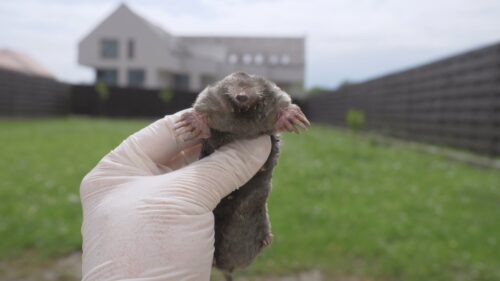

Before we go I thought it would be interesting to give a little summary of this strange pelt that is rarely seen today. Mole fur first gained prominence in Europe during the Victorian era, when it was used to craft exquisite garments and accessories. The practice of using mole fur in fashion can be traced back to the 1800s, when it was primarily used to make collars, cuffs, and trimmings for coats and jackets. Its natural durability, warmth, and ability to resist water made it an ideal material for outerwear. As the demand for mole fur grew, it became a symbol of status and refinement, with affluent women seeking to include it in their wardrobes to showcase their wealth and taste.
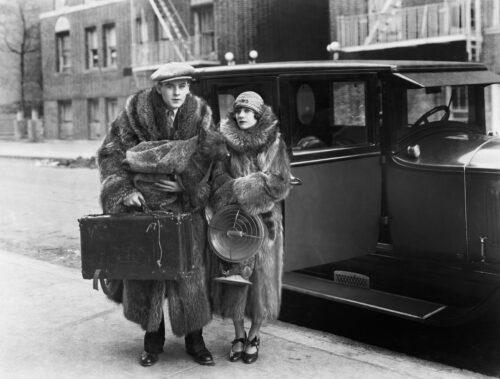

In the early 20th century, mole fur reached the height of its popularity, with designers incorporating it into a wide range of clothing items, from hats and gloves to stoles and evening gowns. The Art Deco period, in particular, saw a resurgence of interest in mole fur, as the material's softness and elegance perfectly complemented the era's sleek, geometric designs. Mole fur continued to be a popular choice in fashion until the mid-20th century when synthetic fabrics and changing tastes led to a decline in demand for natural furs.








I remember stuffing moleskin scraps into the toes of my ballet toe shoes. It made them much more comfortable to wear.
This was a very informative article. I’ve often heard of moleskin fabric but knew nothing about it properties, sewing tips or usage. I have a handbag that needs new handles. I’ve worn the fabric through to the welting inside. I’ll have to find a retailer first, do you have any suggestions for websites? Thanks for a great article. I look forward to reading about more fabric related articles.
It is my pleasure to see you take the time to read about fabrics, I am passionate about the subject. I will do a bit of research and attach it to the article. Kind Regards, MC
Thanks for the valuable lesson on moleskin fabric. I am so happy to be enlightened. Before this article, I ignorantly believed this was skin from the helpless little mole I see often in my yard. I will no longer cringe from the thought of using moleskin fabric. You have helped my thoughts and my psyche. It is gorgeous material. Beautiful and informative article.
Truly my pleasure. You would be surprise how many people think the way you used to. Kind Regards, MC